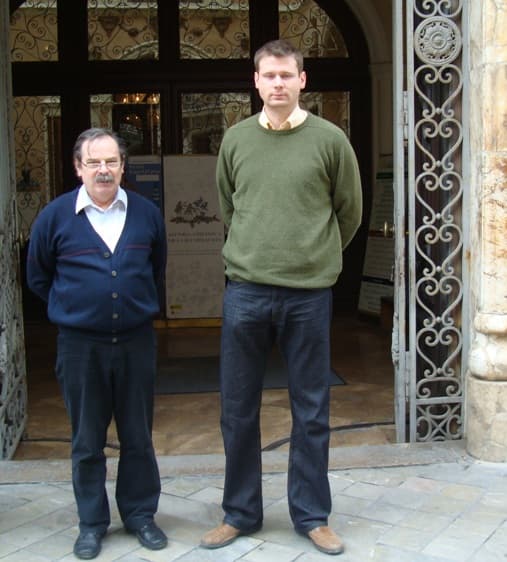Analytical methods and Green chemistry: A Themed Issue in Honor of Professor Jacek Namieśnik
A special issue of Molecules (ISSN 1420-3049). This special issue belongs to the section "Analytical Chemistry".
Deadline for manuscript submissions: closed (20 February 2020) | Viewed by 56143
Special Issue Editors
Interests: porous materials; biosourced materials; green chemistry; carbonaceous materials; energy and environmental applications; chromatograpy; neoteric solvents (ionic liquids, supercritical fluids)
Special Issues, Collections and Topics in MDPI journals
Interests: green analytical chemistry; environmental analytical chemistry; microextraction techniques; chemometrics; sustainability assessments; greenness assessments
Special Issue Information
Dear Colleagues,

Prof. Mihkel Koel and Dr Marek Tobiszewski, Valencia 2011
Greening analytical chemistry by making it more effective and precise is one of the critical concerns of analytical chemistry. In the Special Issue “Analytical methods and green chemistry”, we would like to collect up-to-date original and review papers in this field.
This Special Issue will honor the memory of prof. Jacek Namieśnik, who passed away on 14 April 2019. He was a very active analytical chemist, the author of more than 800 papers. He was particularly interested in the topic of greening analytical methods and was one of the most recognizable scientists working in this field.
For authors, this Special Issue is a chance to present their results or views on making analytical chemistry more environmentally friendly. It is especially important as chemical analysis still contributes to environmental pollution and occupational exposure. This Special Issue aims to highlight the trends in developing new methods and processes for analysis and share this knowledge with a broader audience in order to help increase the diffusion and influence of this important topic in the field of analytical chemistry. The topics of the papers to be submitted to this Special Issue are defined, but not limited, by the keywords presented below.
Prof. MIHKEL KOEL
Dr. Marek Tobiszewski
Guest Editors
Manuscript Submission Information
Manuscripts should be submitted online at www.mdpi.com by registering and logging in to this website. Once you are registered, click here to go to the submission form. Manuscripts can be submitted until the deadline. All submissions that pass pre-check are peer-reviewed. Accepted papers will be published continuously in the journal (as soon as accepted) and will be listed together on the special issue website. Research articles, review articles as well as short communications are invited. For planned papers, a title and short abstract (about 100 words) can be sent to the Editorial Office for announcement on this website.
Submitted manuscripts should not have been published previously, nor be under consideration for publication elsewhere (except conference proceedings papers). All manuscripts are thoroughly refereed through a single-blind peer-review process. A guide for authors and other relevant information for submission of manuscripts is available on the Instructions for Authors page. Molecules is an international peer-reviewed open access semimonthly journal published by MDPI.
Please visit the Instructions for Authors page before submitting a manuscript. The Article Processing Charge (APC) for publication in this open access journal is 2700 CHF (Swiss Francs). Submitted papers should be well formatted and use good English. Authors may use MDPI's English editing service prior to publication or during author revisions.
Keywords
- Green analytical chemistry
- Sample preparation
- Green separation techniques
- Alternative solvents
- Electrochemical analysis
- Sensors
- Signal processing
- Chemometrics







